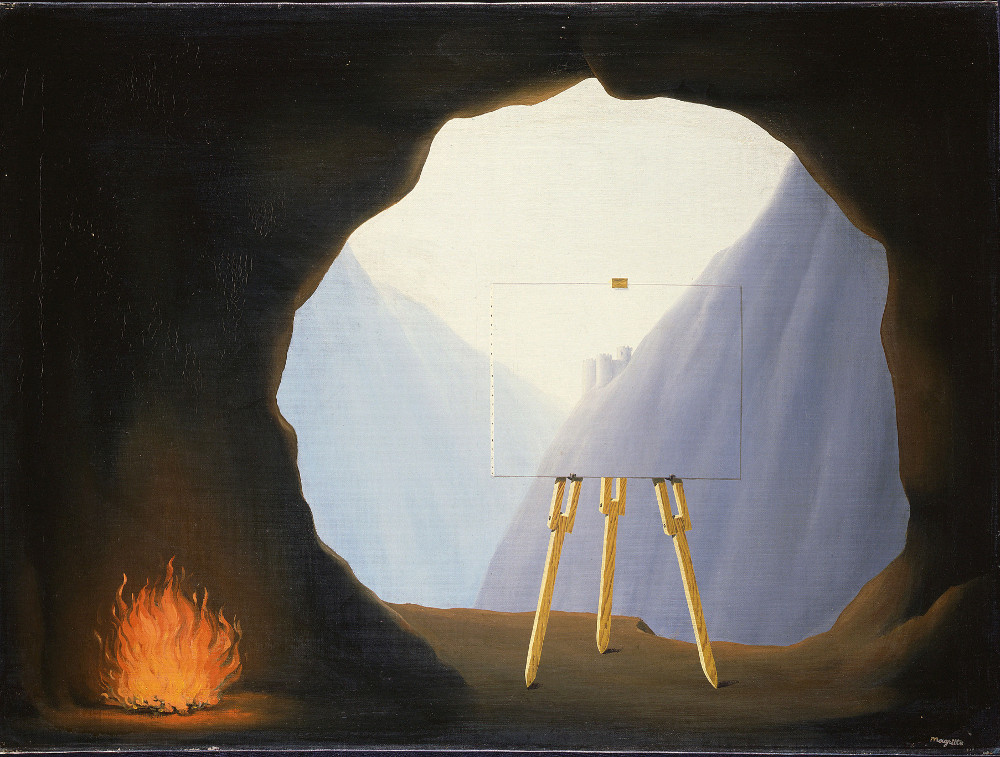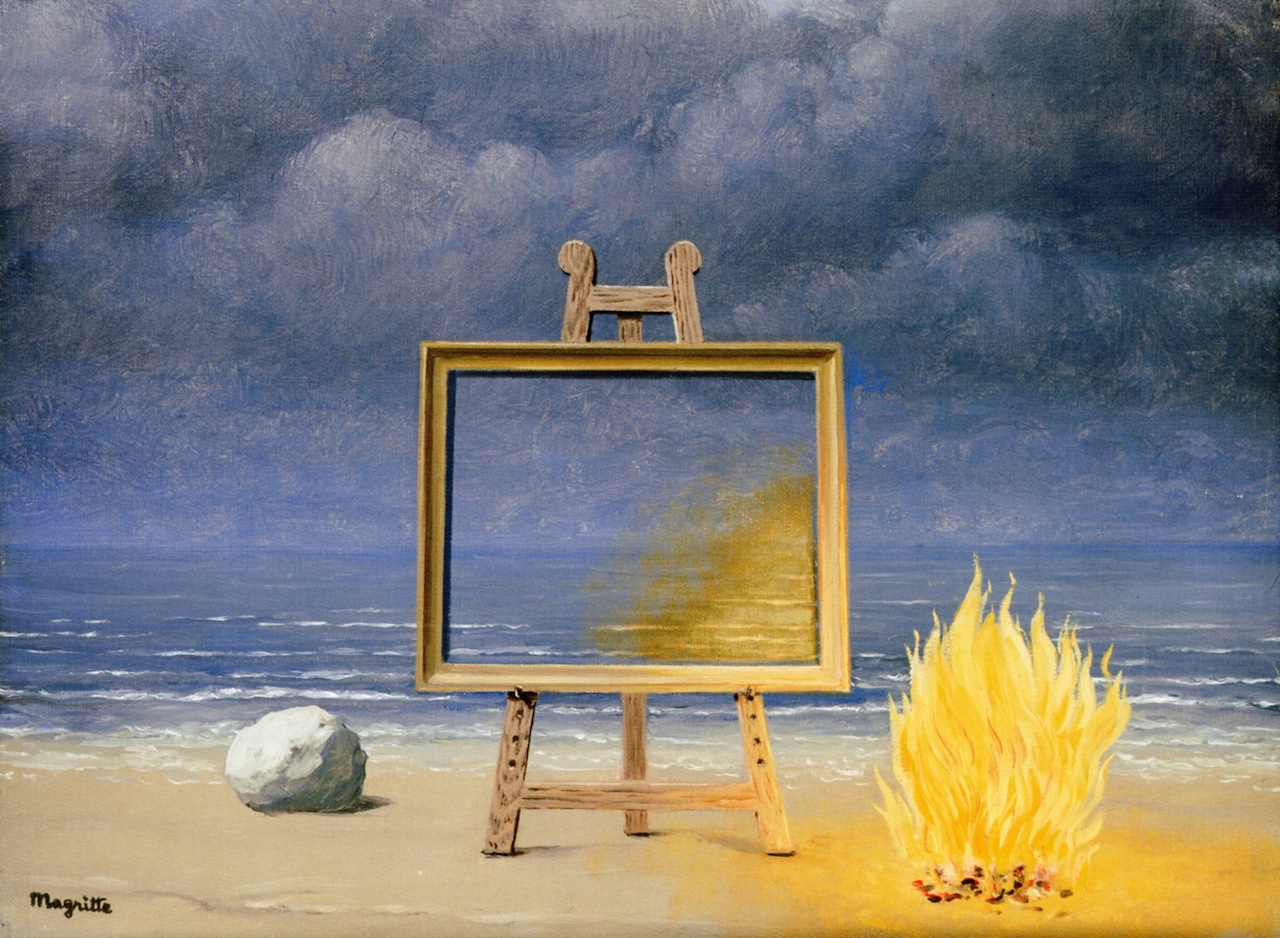Magritte, and the scientist's condition
I always liked Magritte, his witty enigmas on frame, the hard fundamental questions he explores with such clarity. I particularly resonate with the questions about language and meaning: these fundamental questions motivate both my interests in Computer Science and in Music.
About a year ago, I went with some friends to the Schirn museum in Frankfurt which hosted a temporary exposition entitled “Magritte. The Treachery Of Images”. Among many notable works, two of them suggested to me a metaphor that I want to share with you: La condition humaine (the human condition) and La belle captive (the beautiful prisoner).
La condition humaine plays with perception, representation, the concept of reality.

René Magritte, La condition humaine (1935)
The theme of the painting frame containing an image indistinguishable from the background is reinterpreted with a strong reference to Plato’s allegory of the cave. The viewer is in the cavern, as all humanity, forced to look outside facing the dilemma of believing one’s own perception. Is the background real? Is the frame real? How can I know the difference between what’s on the frame and what’s behind it? What if the whole picture is a painting, including the cavern? The enigma is so poignantly expressed, the question underlined by the title so powerful.
Not far from it, another painting resonated with the first: La belle captive. This time the setting is a beach, another frame mocking the background in front of us.

René Magritte, La belle captive (1950)
There is a crucial detail in this painting that, I think, really sets it apart from the first: the reflection of the fire on the frame. It is this detail that made me think: the perfect title for this would be “The scientist’s condition”. I like to read this painting as a metaphor for the scientist’s philosophical stance on reality. Yes, we are all tricked by our perceptions, and we are trapped in the enigma of what’s real; and Science cannot resolve this enigma for us. But Science has the crucial role of the fire in La belle captive: it constantly reminds us of the issue, and prevents us from indulging in a comforting self-delusion of knowing what is true. The reflection of the fire on the frame is there to warn us about the possible deception, and serves as a test for what is not true.
It always surprises me how the stereotype of the scientist is often portrayed in the media as almost the opposite of what I just proposed: that is, an arrogant hyper-rational know-it-all. I think this stems from a crucial misunderstanding: being certain (through evidence) of something being false, does not imply the arrogance of knowing what is true. To the contrary, a scientist cannot ignore what the fire’s reflection is revealing: all your knowledge is, given the facts, simply your best hypothesis of what reality is.
The scientist’s condition is a difficult one, requiring the strength to constantly deal with ontological uncertainty and ambiguity. But if you want to be intellectually honest, it is the only tenable position.